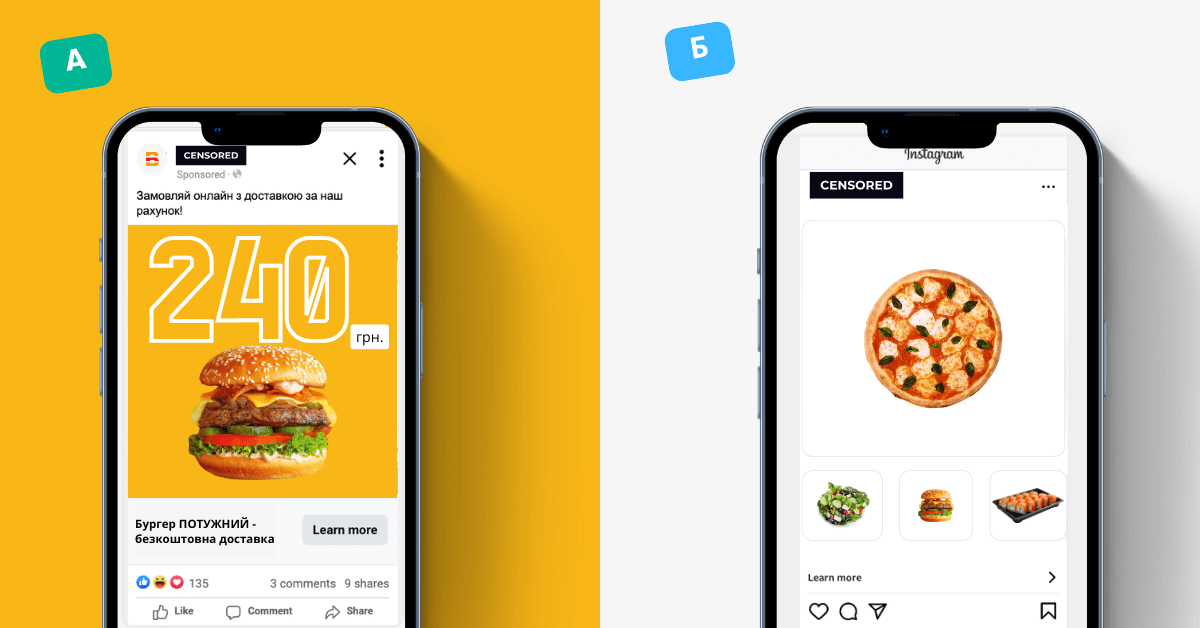Project Overview
Client: A chain of restaurants in Kyiv offering delivery and takeout services.
Goals: The client’s marketing efforts focused on three primary areas:
- Increasing foot traffic to specific locations in the chain.
- Boosting online orders for delivery via the website.
- Encouraging customers to order takeout.
This case study examines Meta Ads strategies used to increase the volume of online delivery orders through the client’s website.
Experiment Setup
Food delivery presents unique challenges when approached through ad platforms (this applies to both Meta and Google Ads). The ad system tools and strategies depend heavily on whether the campaign is promoting a service or a product. In this case, food delivery acts as a hybrid:
- Delivery service falls under the service category.
- Order processing on the site follows typical e-commerce methods.
This hybrid nature introduces uncertainty for both ad platforms and PPC specialists, as it complicates the recommendation of a specific campaign approach. To address this, we decided, together with the client, to conduct an experiment to determine the optimal campaign setup.
Option A |
Option B |
|
|

Ad Display Examples
- Option A: Static banner
- Option B: Dynamic ad generated from product feed elements uploaded via Facebook Commerce Manager
Results
The experiment showed that Option A, a campaign setup more typically used for service promotion, outperformed other configurations.
During the experiment, we adjusted budget allocation toward clicks, so the cost per conversion metric was used rather than the total number of conversions:

Among the creative formats tested within Option B, the carousel format yielded the best performance:

Conclusions
- Running experiments can help reduce unproductive spending when scaling up.
- For campaigns involving non-standard approaches or unique business requirements, testing different configurations is particularly valuable. Advertising platforms rely on AI-driven algorithms, which can perform suboptimally when insufficient data is available.
Project Team
- Project Manager: Yekaterina Timoshenko
- PPC Specialist: Alexander Shilin
- Head of PPC: Galina Lyman




